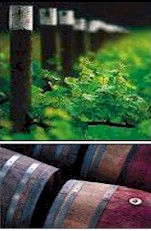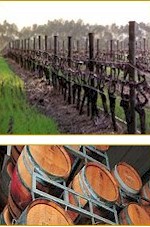


Like many tales, Evans & Tate's does not begin in Australia. Lionel Teitelbaum was born in 1899 in a village called Nicopol in the Ukraine. Still a young boy when he emigrated to Australia in 1909, Lionel was bounding with confidence and enthusiasm. Such energy translated into a successful family and business life, creating a solid foundation for the future Tate generations. Lionel ensured that his son John enjoyed the benefits of an education as well as an appreciation of cultural pursuits including art, music and wine.

As his business career matured, John Tate was able to turn one of his lifelong dreams into reality when he purchased a small vineyard with friend and business partner John Evans. The following year the Tate involvement in the industry became absolute with the purchase of a small winery called Gnangara Wines, located in the historic Swan Valley, just north of Perth.
The primary aim at Evans & Tate is to make wines that are truly expressive of the best terroirs within the Margaret River region. A state of the art 7500 tonne crush winery, built with this philosophy in mind, is sited at the Lionel Vineyard in Jindong. The winery reflects the professionalism and commitment shown in all areas of the company.
Evans & Tate have invested heavily in cutting edge winemaking equipment, impressive stocks of French and American oak, and the best laboratory facilities. The winery is close to all major vineyard sites from which grapes can be sourced, which gives the winemakers enough freedom to make each parcel of fruit in accordance with it's specific flavour profile and attributes.

The wines of Evans & Tate have consistently merited high critical acclaim and accolades from peers and public alike. Evans & Tate has created an enviable show record over the years receiving numerous trophies and gold medals at both domestic and international competitions. With each individual style of wine, the team looks to achieve intensity of flavour, complexity and regional character.
"From its Swan Valley base 30 years ago, Evans & Tate became the largest Margaret River winery and producer. Having increased its estate vineyard holdings with the establishment of a large planting in the Jindong area, it raised substantial capital by listing on the Stock Exchange. It then turned its attention eastwards, with the acquisition of Oakridge Estate in the Yarra Valley, followed by Cranswick Wines (since sold). It became a casualty of the downturn in the market in 2005, its future direction uncertain, a merger with a US company aborted in March '07. Throughout all this turmoil, the high quality of its Margaret River wines has been maintained." -James Halliday
No single achievement has meant more to the winemaking team than the Trophy for Best Red Wine of the Competition at the 2000 International Wine Challenge in London for Evans & Tate 1999 Margaret River Shiraz. This award was especially significant as it validated the Evans & Tate viticultural and vinicultural philosophy, whilst crystallizing the Margaret River region as a truly world class winegrowing appellation.
